Posted on February 28th, 2011 by ASEE
In this project, students in grades 6-12 will recreate the remarkable measurement of the circumference of the earth first performed over 2,000 years ago. Using rulers, protractors, and meter sticks, students measure shadows cast by a stick on a day close to the equinox, then use that measurement in a simple equation to determine the circumference.
Read More
Filed under: Grades 6-8, Grades 9-12, Lesson Plans | 1 Comment »
Tags: Earth Science, Geometry, Mathematics
Posted on February 13th, 2011 by Mary Lord
 More public high school students are taking and succeeding at AP exams than 10 years ago, a new report from the College Board reveals. Maryland tops the nation, with 24.8 percent of students passing at least one AP test, compared with a national average of 16.9 percent.
More public high school students are taking and succeeding at AP exams than 10 years ago, a new report from the College Board reveals. Maryland tops the nation, with 24.8 percent of students passing at least one AP test, compared with a national average of 16.9 percent.
Read More
Filed under: K-12 Education News | 1 Comment »
Tags: Grades 9-12, Mathematics, Public Policy, Scholarships and Fellowships, Science
Posted on February 13th, 2011 by Mary Lord
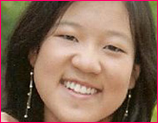 Top achievers in Advanced Placement science and mathematics courses from each state recently won 2010 Siemens Awards for Advanced Placement. The annual awards confer a $2,000 college scholarship to one male and one female student who aced the greatest number of AP exams in subjects ranging from Biology to Calculus BC to Physics C.
Top achievers in Advanced Placement science and mathematics courses from each state recently won 2010 Siemens Awards for Advanced Placement. The annual awards confer a $2,000 college scholarship to one male and one female student who aced the greatest number of AP exams in subjects ranging from Biology to Calculus BC to Physics C.
Read More
Filed under: K-12 Education News | Comments Off on Top AP Science & Math Students Win Siemens Awards
Tags: Grades 9-12, Mathematics, Programs for Students, Scholarships and Fellowships, Science
Posted on February 10th, 2011 by ASEE
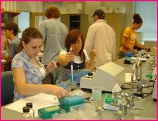 Project SMART (Science and Mathematics Achievement through Research Training) is a 4-week Summer Institute at the University of New Hampshire, July 5-29, 2011, for talented high school students in grades 10 and 11. It challenges, educates, and motivates students in science and mathematics while acquainting them with the environment and resources of the University as a place for higher education and research. Cost: $3,000 for full four weeks, $2,500 without weekend stays.Applications accepted until all places are filled.
Project SMART (Science and Mathematics Achievement through Research Training) is a 4-week Summer Institute at the University of New Hampshire, July 5-29, 2011, for talented high school students in grades 10 and 11. It challenges, educates, and motivates students in science and mathematics while acquainting them with the environment and resources of the University as a place for higher education and research. Cost: $3,000 for full four weeks, $2,500 without weekend stays.Applications accepted until all places are filled.
Read More
Filed under: Grades 9-12, K-12 Outreach Programs | Comments Off on Students’ Summer: Science and Math in New Hampshire. July 5-29, 2010.
Tags: Aerospace, Biotechnology, Computer Science, Environmental science, Grades 10 and 11, Marine Science, Mathematics, Nanotechnology, Science, Summer Camps & Programs (Students), Summer Programs (Students)
Posted on January 23rd, 2011 by ASEE
 Vi Hart has an audacious career ambition: she wants to make math cool. In November, she posted a video about doodling in math class. More videos followed, including one about drawing stars and another about prime numbers. By now, they’ve gone viral, viewed more than a million times.
Vi Hart has an audacious career ambition: she wants to make math cool. In November, she posted a video about doodling in math class. More videos followed, including one about drawing stars and another about prime numbers. By now, they’ve gone viral, viewed more than a million times.
Read More
Filed under: K-12 Education News | 3 Comments »
Tags: Girls Education, Math, Mathematics, Programs for Girls, Videos
Posted on January 9th, 2011 by ASEE
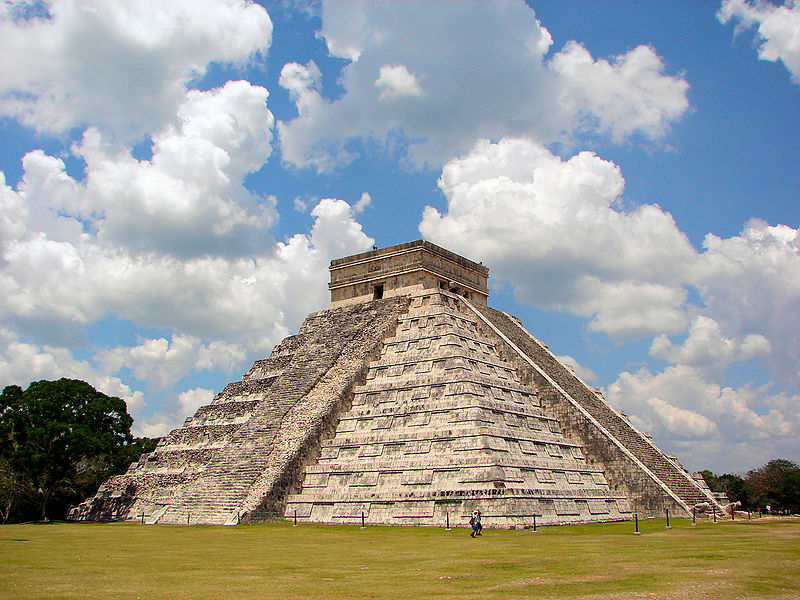 In this lesson combining math, engineering, and history, students in grades 6-12 learn about the ancient calendar system used by the Maya of Central America. Students construct a simple model of a calendar round, learning about prime numbers and the mechanics of these ancient devices.
In this lesson combining math, engineering, and history, students in grades 6-12 learn about the ancient calendar system used by the Maya of Central America. Students construct a simple model of a calendar round, learning about prime numbers and the mechanics of these ancient devices.
Read More
Filed under: Grades 6-8, Grades 9-12, Lesson Plans | 1 Comment »
Tags: Astronomy, Engineering in History, Grades 6-12, History, Mathematics
Posted on January 9th, 2011 by ASEE
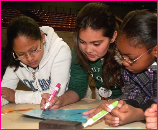 A new report by the Information Technology and Innovation Foundation recommends that student assessments be based on skills, such as reading for information, locating information, and applied mathematics, instead of content. In STEM subjects, students’ desired outcome should be improved skills in inquiry, design, and the understanding and use of symbolic language in math.
A new report by the Information Technology and Innovation Foundation recommends that student assessments be based on skills, such as reading for information, locating information, and applied mathematics, instead of content. In STEM subjects, students’ desired outcome should be improved skills in inquiry, design, and the understanding and use of symbolic language in math.
Read More
Filed under: K-12 Education News | Comments Off on Stress Skills Instead of Content Learning, Report Urges
Tags: Education Policy, Math, Mathematics, Public Policy, Research, Research on Learning, STEM education
Posted on November 29th, 2010 by ASEE
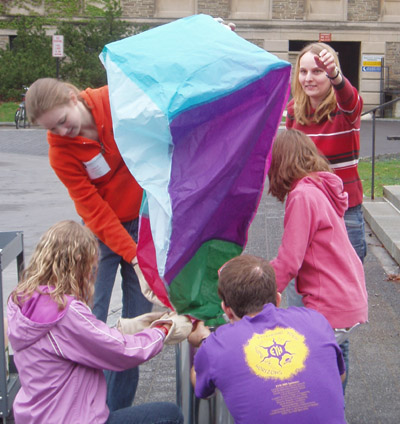 Expanding Your Horizons (EYH) is a one-day conference at Cornell University, April 16, 2011, to encourage middle school girls to pursue careers in science and math. Girls participate in workshops organized by Cornell students and faculty with hands-on activities, meeting female scientist role models and gaining awareness of opportunities in math and science-related careers.
Expanding Your Horizons (EYH) is a one-day conference at Cornell University, April 16, 2011, to encourage middle school girls to pursue careers in science and math. Girls participate in workshops organized by Cornell students and faculty with hands-on activities, meeting female scientist role models and gaining awareness of opportunities in math and science-related careers.
Read More
Filed under: Grades 6-8, Grades 9-12, K-12 Outreach Programs | Comments Off on Event: Science & Math Conference, Cornell U. Middle School Girls. April 30, 2011
Tags: Grades 7-9, Mathematics, Programs for Girls, Science programs, Weekend programs
Posted on November 29th, 2010 by ASEE
 The exhibition Before Pythagoras: The Culture of Old Babylonian Mathematics, being held at the Institute for the Study of the Ancient World in New New York City through Dec. 17, 2010, presents an unprecedented grouping of tablets from the first golden age of mathematics, highlighting both classroom training and advanced curiosity-driven mathematics. Admission: Free.
The exhibition Before Pythagoras: The Culture of Old Babylonian Mathematics, being held at the Institute for the Study of the Ancient World in New New York City through Dec. 17, 2010, presents an unprecedented grouping of tablets from the first golden age of mathematics, highlighting both classroom training and advanced curiosity-driven mathematics. Admission: Free.
Read More
Filed under: K-12 Outreach Programs | Comments Off on Exhibit: Babylonian Mathematics. New York City. Dec. 17, 2010
Tags: Mathematics, Museums









 More public high school students are taking and succeeding at AP exams than 10 years ago, a new report from the College Board reveals. Maryland tops the nation, with 24.8 percent of students passing at least one AP test, compared with a national average of 16.9 percent.
More public high school students are taking and succeeding at AP exams than 10 years ago, a new report from the College Board reveals. Maryland tops the nation, with 24.8 percent of students passing at least one AP test, compared with a national average of 16.9 percent. Top achievers in Advanced Placement science and mathematics courses from each state recently won 2010 Siemens Awards for Advanced Placement. The annual awards confer a $2,000 college scholarship to one male and one female student who aced the greatest number of AP exams in subjects ranging from Biology to Calculus BC to Physics C.
Top achievers in Advanced Placement science and mathematics courses from each state recently won 2010 Siemens Awards for Advanced Placement. The annual awards confer a $2,000 college scholarship to one male and one female student who aced the greatest number of AP exams in subjects ranging from Biology to Calculus BC to Physics C. Project SMART (Science and Mathematics Achievement through Research Training) is a 4-week Summer Institute at the University of New Hampshire, July 5-29, 2011, for talented high school students in grades 10 and 11. It challenges, educates, and motivates students in science and mathematics while acquainting them with the environment and resources of the University as a place for higher education and research. Cost: $3,000 for full four weeks, $2,500 without weekend stays.Applications accepted until all places are filled.
Project SMART (Science and Mathematics Achievement through Research Training) is a 4-week Summer Institute at the University of New Hampshire, July 5-29, 2011, for talented high school students in grades 10 and 11. It challenges, educates, and motivates students in science and mathematics while acquainting them with the environment and resources of the University as a place for higher education and research. Cost: $3,000 for full four weeks, $2,500 without weekend stays.Applications accepted until all places are filled. Vi Hart has an audacious career ambition: she wants to make math cool. In November, she posted a video about doodling in math class. More videos followed, including one about drawing stars and another about prime numbers. By now, they’ve gone viral, viewed more than a million times.
Vi Hart has an audacious career ambition: she wants to make math cool. In November, she posted a video about doodling in math class. More videos followed, including one about drawing stars and another about prime numbers. By now, they’ve gone viral, viewed more than a million times. A new report by the Information Technology and Innovation Foundation recommends that student assessments be based on skills, such as reading for information, locating information, and applied mathematics, instead of content. In STEM subjects, students’ desired outcome should be improved skills in inquiry, design, and the understanding and use of symbolic language in math.
A new report by the Information Technology and Innovation Foundation recommends that student assessments be based on skills, such as reading for information, locating information, and applied mathematics, instead of content. In STEM subjects, students’ desired outcome should be improved skills in inquiry, design, and the understanding and use of symbolic language in math.  Expanding Your Horizons (EYH) is a one-day conference at Cornell University, April 16, 2011, to encourage middle school girls to pursue careers in science and math. Girls participate in workshops organized by Cornell students and faculty with hands-on activities, meeting female scientist role models and gaining awareness of opportunities in math and science-related careers.
Expanding Your Horizons (EYH) is a one-day conference at Cornell University, April 16, 2011, to encourage middle school girls to pursue careers in science and math. Girls participate in workshops organized by Cornell students and faculty with hands-on activities, meeting female scientist role models and gaining awareness of opportunities in math and science-related careers. The exhibition Before Pythagoras: The Culture of Old Babylonian Mathematics, being held at the Institute for the Study of the Ancient World in New New York City through Dec. 17, 2010, presents an unprecedented grouping of tablets from the first golden age of mathematics, highlighting both classroom training and advanced curiosity-driven mathematics. Admission: Free.
The exhibition Before Pythagoras: The Culture of Old Babylonian Mathematics, being held at the Institute for the Study of the Ancient World in New New York City through Dec. 17, 2010, presents an unprecedented grouping of tablets from the first golden age of mathematics, highlighting both classroom training and advanced curiosity-driven mathematics. Admission: Free.